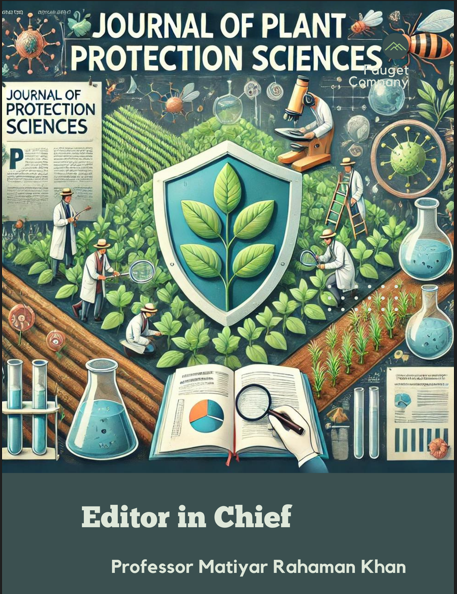Formulation technology: key parameters for food safety with respect to agrochemicals use in crop protection
DOI:
https://doi.org/10.48165/Keywords:
Conventional, agrochemicals, toxic, environment, new-generation, adjuvantAbstract
A very small fraction of all applied pesticides is directly involved in the pesticidal mechanism. This implies that most of the applied pesticides find their way as 'residue' in food chains where they undergo concentration and pro duce potential, long term, adverse health effects. Pesticides in developing countries in Asia and Pacific region are mainly available as dust, wettable powder, emulsifiable concentrates, solutions, etc. These types of formulations are regarded now as ‗conventional‘, ‗old technology‘ or ‗classical‘ or ‗traditional‘ because of their increased in dose rate or repeated applications to get desired bioefficacy which lead to accumulation of pesticide residues in food commodities along with environmental pollution. Conventional formulations, because of their characteristics i.e. dustiness and use of volatile organic solvents in their preparation maximize several problems like health haz ards and environmental pollution etc. With the increasing awareness of toxic effects of conventional formulations, there is a significant trend towards switching over from such pesticide formulations using petroleum and organic solvent based constituents to user and environment friendly water based formulations. These formulations not only replace toxic, non-degradable ingredients/adjuvants of the conventional formulations but also increase the bio efficacy of the products through incorporating latest technologies including size reduction (WP to SC, SL to ME), increased coverage of applied surface area (EC to ME/Nano-formulations), reduced wastage (Dust/WP to Con trolled Release Formulations) and dose rates of same pesticides applied to improve food quality with minimum pesticide residues.
References
Beestman GB. 2003 Controlled release in crop protection: past experience and future potential, pp. 272-279. In
Chemistry of crop protection, progress and prospects in science and regulation (Eds Voss G Ramos G) Wiley-VCH Verlag GmbH & Co, Weinheim.
Djordjevic J Michniak B Uhrich Kathryn E. 2003 Am phiphilic star like macromolecules as novel carri ers for topical delivery of non steroidal anti inflammatory drugs. AAPS PharmSciTech 5(4): 1-12.
Fernández-Pérez M. 2007 Controlled release systems to prevent the agro-environmental pollution de rived from pesticide use. Journal of Environmental Science and Health B 42:857-62.
Geisler G Hellweg S Liechti S Hungerbüler K. 2004 Variability assessment of groundwater exposure to pesticides and its consideration in life-cycle assess ment. Environmental Science and Technology 38:4457-64.
Gong Y Fan M Gao F Hong J Liu S Luo S Yu J Huang J. 2009 Preparation and characterization of amino functionalized magnetic nanogels via photopoly merisation for MRI applications. Colloids and Sur faces B 71:383-407.
Green JM Beestman GB. 2007 Recently patented and commercialized formulation and adjuvant technol ogy. Crop Protection 26: 320-27.
Gupta PK. 2004 Pesticide Exposure-Indian Scene. Toxicology 198:83-90.
Harper S Usenko C Hutchison J Maddux B Tanguay R. 2008 Proactively designing nanomaterials to en hance performance and minimize hazard. Interna tional Journal of Nanotechnology 5:124-42.
Hasegawa U Nomura ICM Kaul SC Hirano T Akiyoshi K. 2005 Nanogel quantum dots hybrid nanoparti cles for live cell imaging. Biochemical and Bio physical Research Communications 331:917-21.
Hewin International. 2000 Surfactants and other addi tives in Agricultural Formulations, Published by John Wiley and Sons Inc., New York, USA.
Hiromoto B. 2007 Pesticide microemulsions and dis persant/penetrant formulations. United States Pat

